class k fires can be extinguished by
Class B fires that can be extinguished with a carbon dioxide extinguisher include flammable liquids and gases solvents oil greases excluding cooking oilsgreases tars oil-based paints and lacquers. Specialty areas such as the Operating Rooms and Kitchens have specific extinguishers.

On What Classes Of Fires Can A Dry Chemical Extinguisher Be Used Quora
Cooking Oils andor Fats These fires are most commonly kitchen fires as they involve cooking oils.
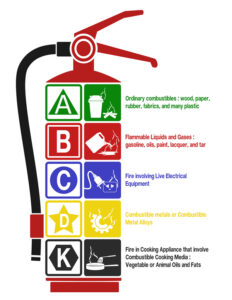
. The wet mist contains potassium acetate potassium carbonate or potassium citrate mixed with the cooking grease to create a blanket that will cool the flammable liquid and block oxygen. Extinguishing a fire by combustion of vegetable oils or animal fats requires extinguishers that present an aqueous solution based on potassium acetate which when in contact with these fats animal or vegetable in combustion stimulate a saponification of the themselves that is they create a layer of soap on the hot oil that ends up. Can fight fires upto 20 feet distance and lasts for 25 minutes.
Cooking fires that spark from grease lard olive oil butter animal fats and vegetable fats are recognized as Class K fires. Water or foam extinguishers will cause these kinds of fires to get worse so be on your guard. Pure creamery butter C.
Commonly known as cooking grease or cooking oil fires Class K fires should be suppressed by using saponification to smother the fire. Locations ABC fire extinguishers are located throughout the Medical Centers in corridors. This absorbs the heat the fire requires to burn and smothers it as well.
Class K Fires. A Class K fire is defined as a cooking fire involving combustion from liquids used in food preparation. Grease and oil flames and are made from Class B or Class K coated extinguisher.
Flammable Liquids and Gases. Dry and Wet Agents to Extinguish Class K Fires. If you have a metal fire the best way to put this out is to use a dry powder extinguisher only.
Commercial buildings and restaurants built with. Dry chemical effective on all classes of fires Type BC. Pressure is stored in gas cartridges.
Fire extinguishers are classified depending on the type of fire that they will extinguish. Class A B and C fires may be extinguished using a multipurpose dry chemical fire extinguisher. Class C fires should be extinguished using a specialized wet chemical system.
Carbon dioxide to be used on chemical or electrical fires Type K. Only Class K fire extinguishers are adequate for Class K fires and should always be close at hand in a commercial kitchen. Class A fires involve ordinary combustible materials such as cloth wood paper rubber and many plastics.
Halon Most suited for electrical fires. However European and Australian categories slightly differ jump to the international comparison chart. Class A fires those which involve the burning of ordinary combustibles are best extinguished with water though in some circumstances water can work on other classes of fire.
Along with having a Class K fire extinguisher readily accessible commercial kitchens should have their fire suppression systems installed by a professional fire. Class K fire extinguishers use special extinguishing agents that separate and absorb the heat elements of the fire the fuel oxygen and heat necessary to start a fire. Class K Fires Extinguish with Chemical Fire Extinguishers.
Halon cylinders are obsolete now as they contain chloro flouro carbons which are harmful to the environment. These extinguishers use extinguishing agents that separate the fuel from the oxygen and help to absorb the heat elements of the fire triangle fuel heat oxygen chemical reaction. Each class of fire refers to the burning of specific materials.
Class C fires which involve energized electrical equipment can also be extinguished with CO2. Class B fires involve flammable and combustible liquids such as gasoline alcohol oil-based paints lacquers. Rendered pig fat lard D.
Class C fires are rated from 1-C through 40-C and can be extinguished using a Class C extinguisher with the same rating. To use a fire. Class K A Class K fire is defined as a cooking fire involving combustion from liquids used in food preparation.
To extinguish a Class D fire use a dry powder agent. Extinguishes the fire by displacing oxygen. What type of fire is CO2 designed for.
A fire class is a system of categorizing fire with regard to the type of material and fuel for combustionClass letters are often assigned to the different types of fire but these differ between territories. Many commercial or industrial kitchens require a special K-Guard system to be installed that can deliver specific Class K fire suppression. Class K Fires are fires that involve cooking oils grease or animal fat and can be extinguished using wet chemical the typical agent found in kitchen fire extinguishers.
The different types of fire need to be treated different. As Carbon Dioxide CO2 is a non-conductive non-corrosive gas it is the perfect solution for protecting computer electrical equipment in the event of a fire. Class K fires can only be extinguished with Class K extinguishers and should never be sprayed with water as this can increase the spread of the cooking liquids.
Extinguishers with an A rating are designed to extinguish fires involving these ordinary combustible materials. Extinguishes the fire by displacing oxygen. New vegetable shortening D.
There are separate standards for the United States Europe and AustraliaThis is used to determine the type of extinguishing agent that can be used for that fire class. Carbon Dioxide CO2 fire extinguishers are most commonly used for Class E fires involving electrical equipment. A class K fire extinguisher is used to control fires involving cooking media such as oils fats and grease commonly found in cooking places such as commercial restaurantsThese fire extinguishers work through saponification to extinguish flames completely.
Under no circumstances should a grease or oil fire ever be. Technically a type of liquid fire Class K fires are distinct enough to warrant their own classification. There are certain ways of handling and.
Can fight fires upto 20 feet distance and lasts for 25 minutes. Fire is extinguished by isolating oxygen from fire. Once the electricity has been shut off to a Class C fire it may be treated as a Class A or Class B fire.
New vegetable shortening OTHER SETS BY THIS CREATOR Chapter 15 Shock and Resuscitaon 88 terms tino1208 NREMT 306 terms tino1208 NREMT. The fuel used in establishing ratings for class K extinguishers must be oil with an anti foaming agent or. Up to 24 cash back Class A fires can be extinguished with water.
Used in kitchens on grease fires. Is Your Commercial Kitchen Prepared. The five classes of fire are.

Abcs Of Fire Extinguishers Fire Prevention Services The University Of Texas At Austin

The Five Classes Of Fires And The Fire Extinguishers That Stop Them Strike First Usa

What Is A Class K Fire Extinguisher Used For

Everything You Need To Know About A Class K Fire Extinguisher

Types Of Fires Kidde Fire Safety

The A B Cs Of Fire Extinguishers Performance Improvements

Purple K Class Fire Extinguishers Use Classification And Model Designs Industrial And Personal Safety Products From Onlinesafetydepot Com
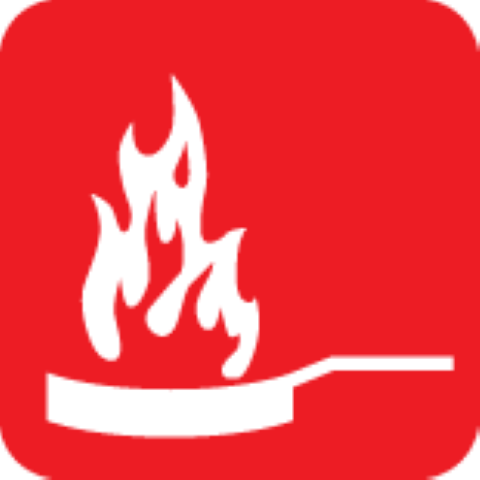
Learn About Portable Fire Extinguishers Fire Safety Learning Center
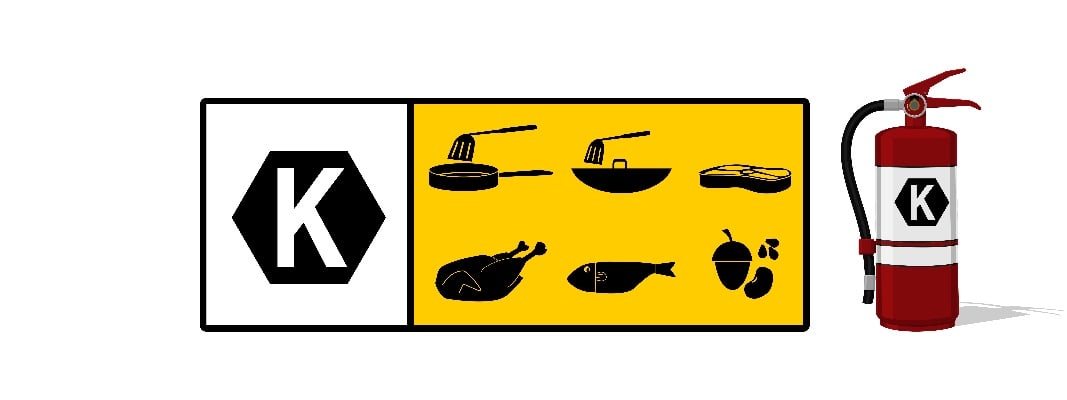
What Is A Class K Fire Extinguisher Used For

Everything You Need To Know About A Class K Fire Extinguisher

China Class K Fire Extinguisher For Kitchen Fire China Stick Type Cooking Oil Pan Fire Extinguishers Stick Pack Cooking Oil Pan Fire Extinguishers
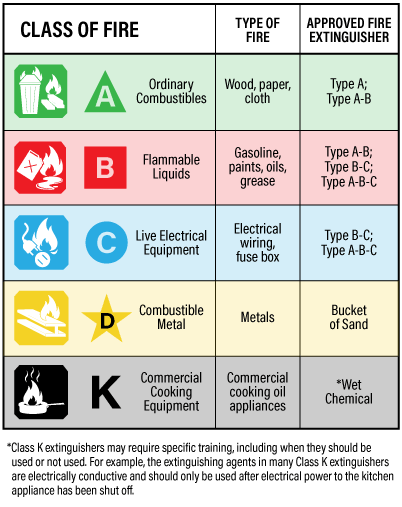
What Are The Types Of Fire Extinguishers And Their Uses Quora
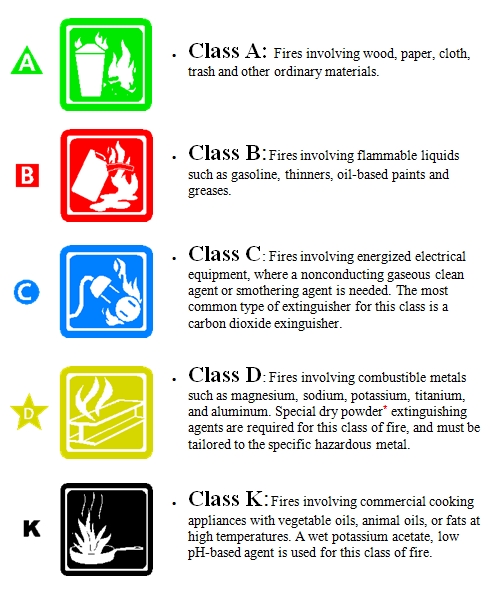
Fire Extinguishers Environmental Health And Safety
What Are The 5 Different Classes Of Fire And What Type Of Extinguisher Can Safely Be Used On Each Quora

Find Out What The Symbols On Your Fire Extinguisher Actually Mean Foremost Promotions
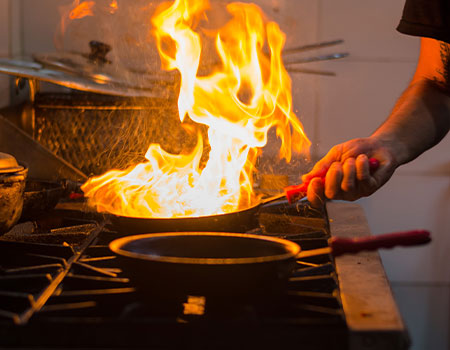
Class K Type Fire Extinguisher

Find Out What The Symbols On Your Fire Extinguisher Actually Mean Foremost Promotions

